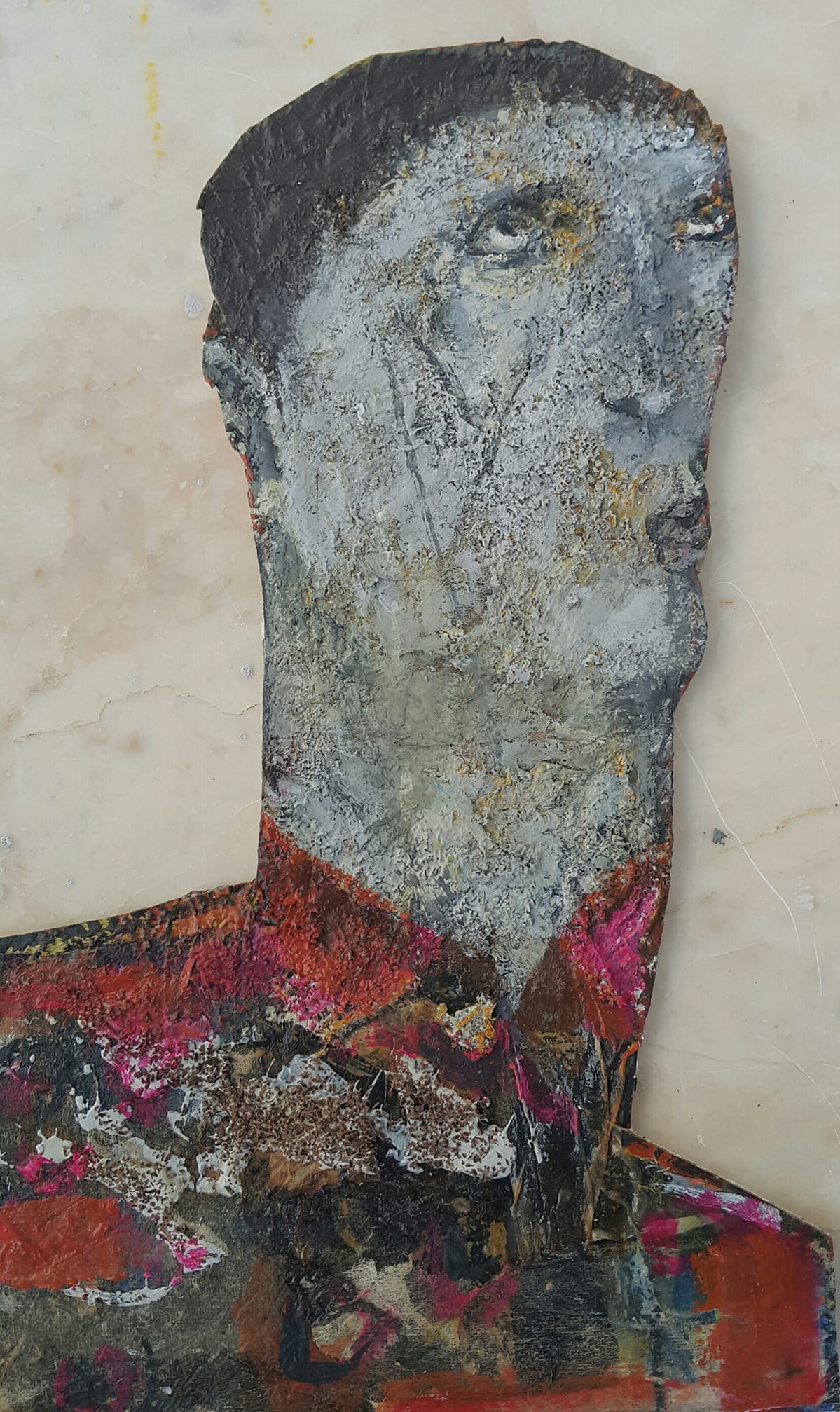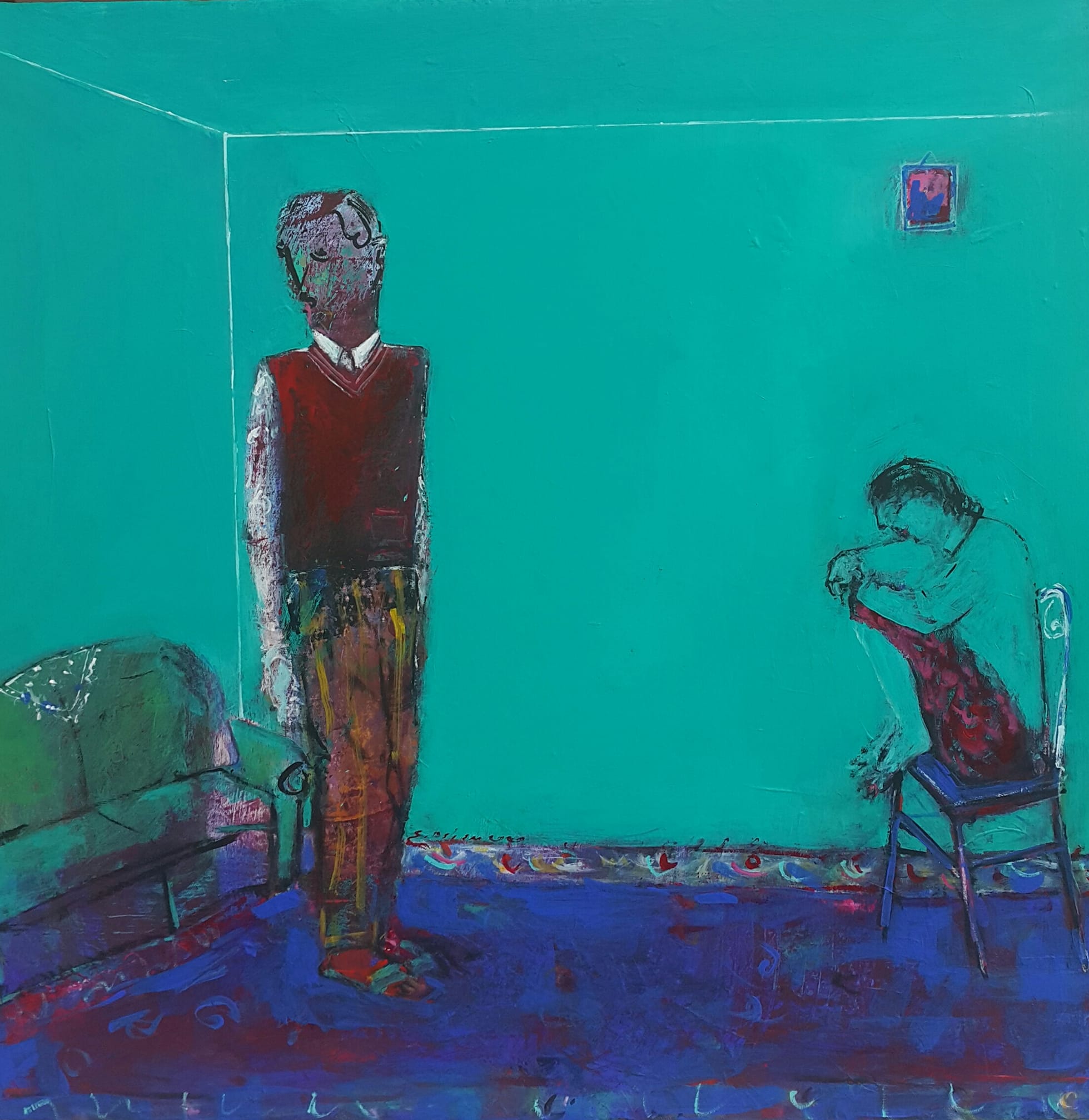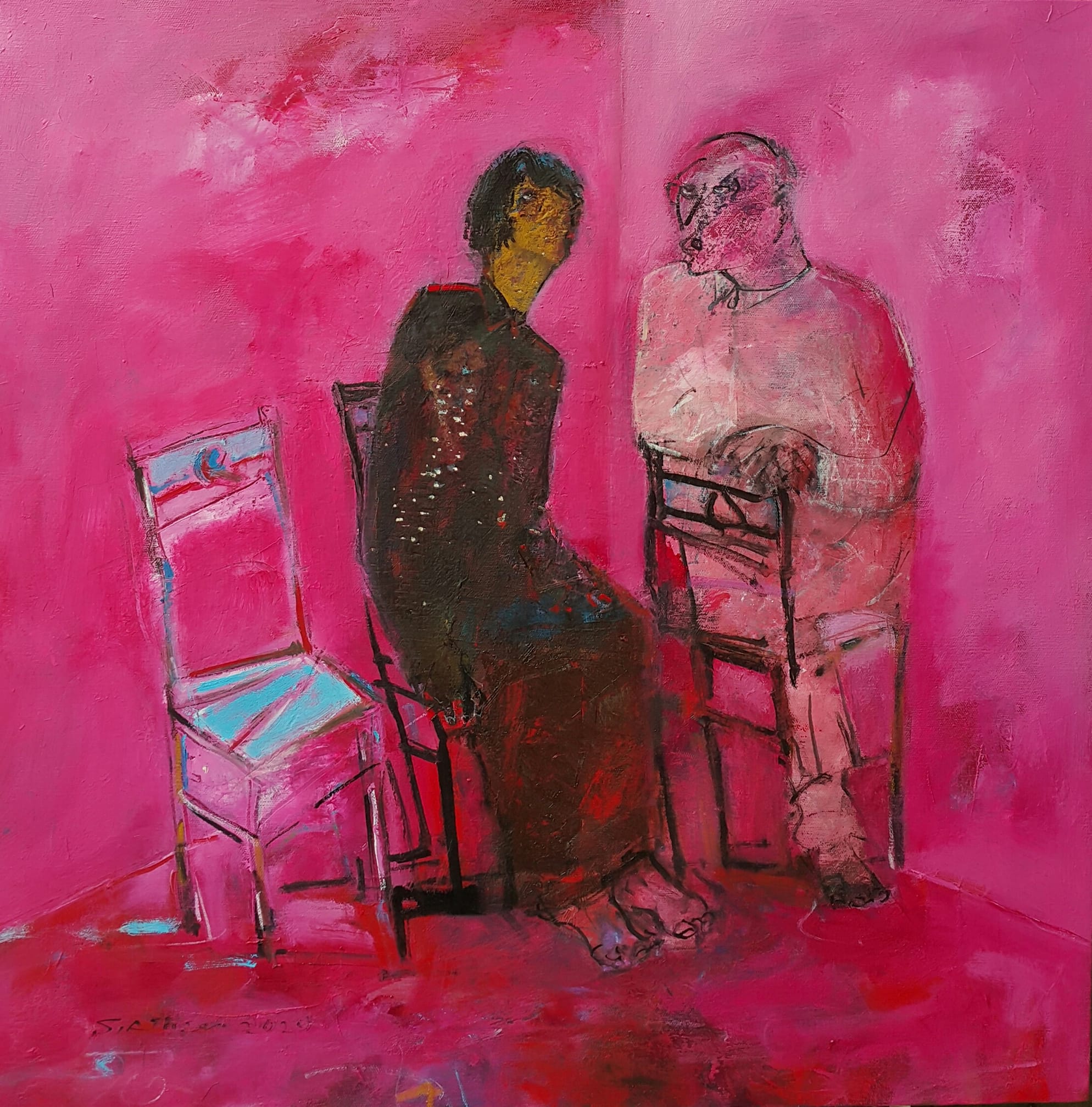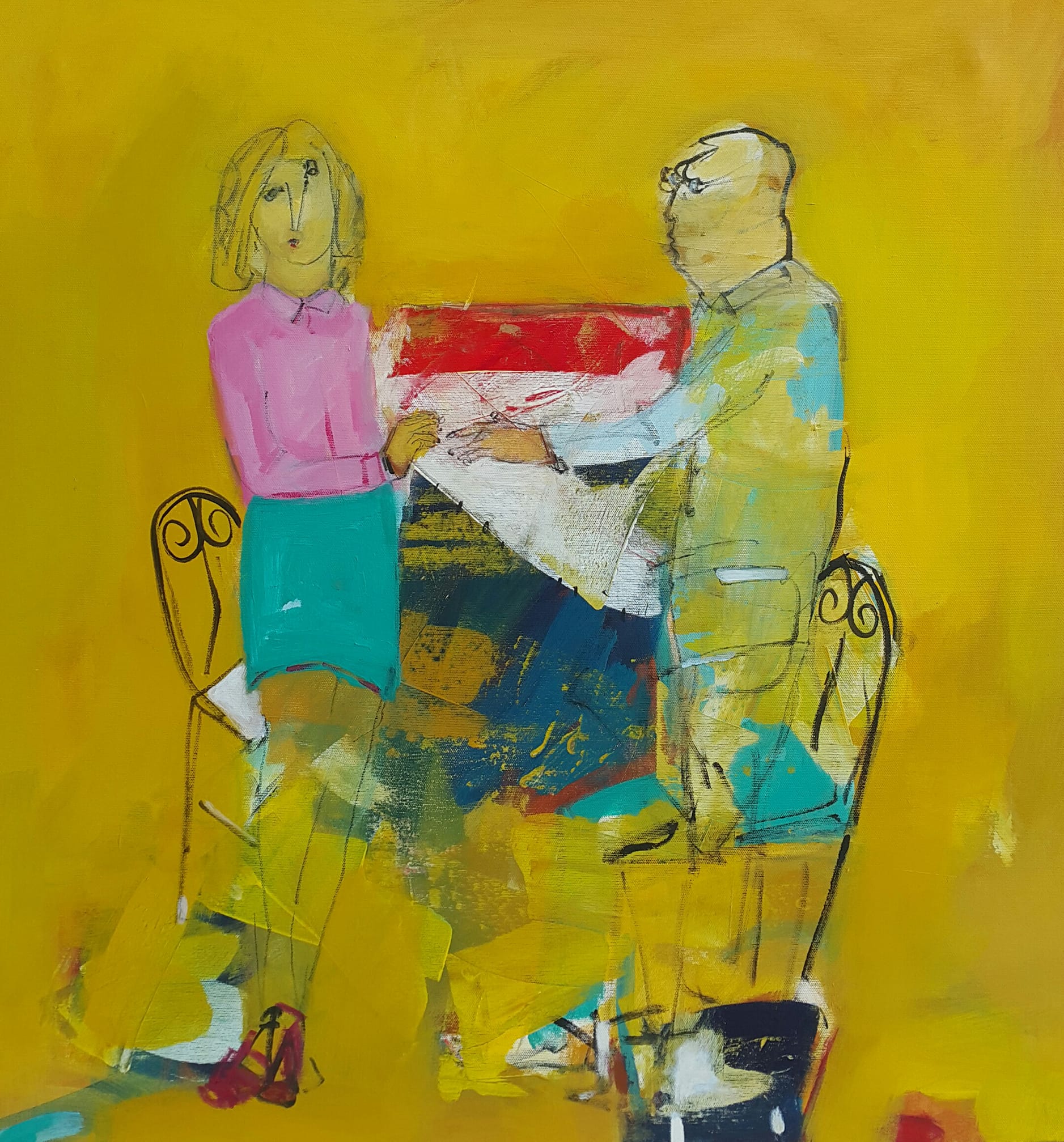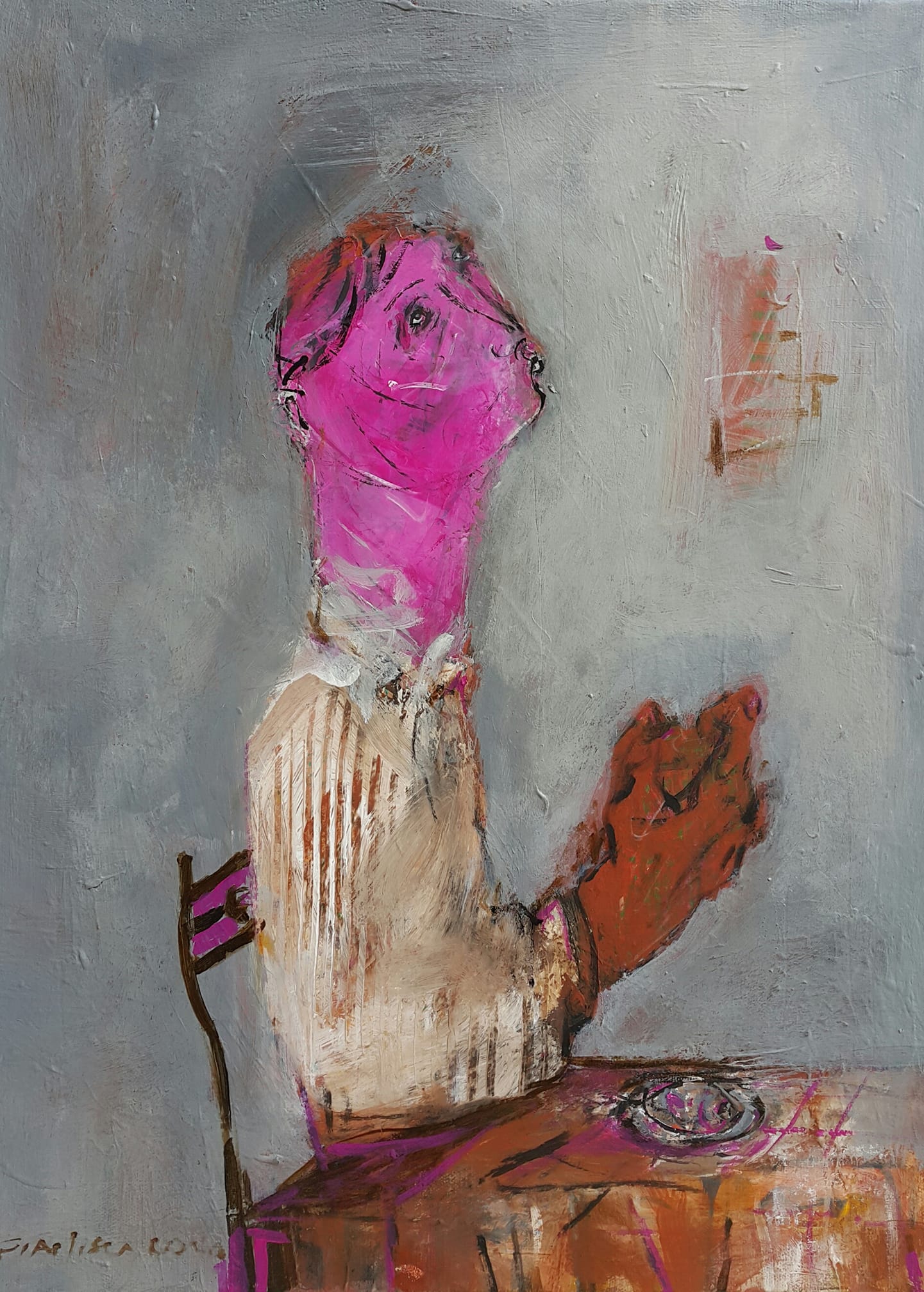Citiţi aici versiunea în română a acestui interviu.
Ilinca Bernea: When I first saw the reproductions of your paintings online, I had the feeling that they mix in an organic and at the same time strange way the fascinating naive style of Marc Chagall with the gloomy ambiance of Kafka's novels. There is something dark and gray in your art, despite the vivid and intense colors. The characters seem to be captive in their living environment, as if they have a symbiotic relationship with the space in which they live. They are made of the same substance with the surrounding material, walls or furniture. The whole framework in which they are represented is, apparently, one with them.
Şükrü Aslişen: Marc Chagall is an artist I really like. I have read Kafkaın Transformation. Like Samsa, which is transformed in the novel, people are transformed throughout their lives. The art education we received, what we experience affects our art as well. I also paint the events that affected me. This process is a difficult one. The artist paints to get away from the negativities in his mind. Art is born of pain.
I.B.: Tell me about your latest series. Your "ugly" characters are, in fact, depicted in a fascinating light and in vivid colours and I could detect a certain tenderness in the way you see them. Am I right? What is their story?
Ş.A.: Art is nourished by pain and distortions and crises. The images I create are a reflection of the pain. I convey to the audience whatever is ugly in me and in others in my aesthetic language.
I.B.: Which are the art schools and currents you feel most connected to?
Ş.A.: We can say that my preference is expressionism.
I.B.: You live in a fabulous place, with an impressive historical heritage, where the ancient ruins of Hierapolis and Tripolis are located, more precisely in the province of Denizli. There are thousands of years of culture in Turkey and also the vestiges and ruins of different civilizations. Is there a certain era you feel more connected to?
Ş.A.: The impact of the geography and culture in which we live is inevitable. I can also say that the effect of the experiences I have had, especially in recent years, has shaped my aesthetic language.
I.B.: What is the subject of the latest exhibition?
Ş.A.: Last year (2020), I opened the Mirakoldaşsanatgallery in Ankara with a series of works entitled "Silent scream". The name of the exhibition we opened this year (2021) is Isolation.
I.B.: Do you feel like you live in a distorted world?
Ş.A.: It is certain that we live in a distorted world. But we, humans, have brought it into this state. The objectives have changed. Relationships have deteriorated.
I.B.: Your works also have an abstract dimension, they are hermetic, their meaning is someway subjected to the imagination and interpretation. It is not easy to penetrate into their deeper layers. The main impression is that of bondage and captivity. The characters seem doomed to endure each other or their own inner burden, unhappy and resigned, obedient. The atmosphere reminds me of the one in Jean Paul Sartre's play: No Exit. Do you consider yourself an existentialist?
Ş.A.: I am giving clues to my feelings. The viewer perceives the work according to its intensity and depth. The meaning you are referring to is not a bondage either, it can be called loneliness not physically, but spiritually. It can also be called the desire to be alone, relaxation, and listening to yourself. I am a responsible person, I do not live in bohemian. I love being free... Am I existentialist? I am not an existentialist. I am not a nihilist. I care most about honesty in people. I cannot tolerate the dishonest.
I.B.: In your view, what are the most problematic and disappointing characteristics of contemporary societies?
Ş.A.: People being selfish. They think they can have everything.
I.B.: Who are the artists that you appreciate the most?
Ş.A.: Francis Bacon, Marc Chagall, Bedri Rahmi Eyüboğlu, Burhan Doğançay.
I.B.: What would be the first words you associate with Turkey?
Ş.A.: Uncertainty, Cost of living, Lack of real democracy. And, despite everything, social sensitivity to national issues.
I.B.: Do you think that art also has a social role? Do you believe in political art?
Ş.A.: I think art is above all. It does not belong to any group or ideology. Just as the essence of life is in human life, so is the essence of art. Art is neither far nor close to issues that are not at stake.
I.B.: Totally agree. We live in a difficult time when the future is unclear and uncertain. How do you feel about this tense situation caused by the pandemic?
Ş.A.: I feel a little anxious. Lack of clarity of the solution reduces hopes, because the disease cannot be fully diagnosed. We'll get rid of that, too.
I.B.: Does urban life alienate people of their own nature? Do you feel affected by the increasingly artificial aspects of social existence?
Ş.A.: Yes, I think that urban life keeps people away from natural life, but you have to resist and not surrender.
I.B.: Aesthetic, emotional and non-verbal communication are more universal than the mind-frames that are intellectually rooted and fed. Is the reasoning the main gap between people? What puts them in conflict?
Ş.A.: The landmarks of different ethnic and cultural backgrounds are one of the reasons for the conflict. These conflicts sometimes make their way through art as well.
I.B.: Does art have to present a problematic background? Is it a two-sided medal meant to emphasize both the desirable and the shady side of things?
Ş.A.: There is not just problematic recycling in art. All emotions in life can be the subject of Art.
I.B.: What is your relationship with nature?
Ş.A.: A very good one.
I.B.: Do you have a new project at the moment?
Ş.A.: My worries and queries and searches always lead me to the workshop and I find myself painting. Art is the most fertile ground for self-expression. Therefore, my biggest project is the chance to live a life with art and to always have something worthy to transpose in creation.
0 comentarii
Arhiva rubricii
Am vrut să fiu un OM liber!, Irina-Cornelia Ionescu, un interviu cu Alexandru FloroiuDe la Harap Alb la jocuri video (cu Harap Alb), Yuka Brevi, un interviu cu Tudor Rădulescu Când ați ascultat ultima oară teatru radiofonic? - Platforma AUZIT, Răzvan Penescu, un interviu cu Teodora Minea , Andrei Mărgineanu, Arina Vizitiu , Robert KocsisInspirația pentru personajele din film a venit din realitatea cruntă a migrației - Clara, Ionuț-Valentin Bouroș, un interviu cu Sabin DorohoiCandoare, poezie și ludic - O rază de soare, Răzvan Rocaș, un interviu cu Toma HogeaToate articolele din această rubricăRubricile categoriei
InterviuriLa persoana Ificti.on.allBibliopolisO săptămînă de prieteniAutismul, din interiorPrimul an de publicitateÎnsemnări mediavitaleJurnal de actor / actriţă în izolarePublicitate
